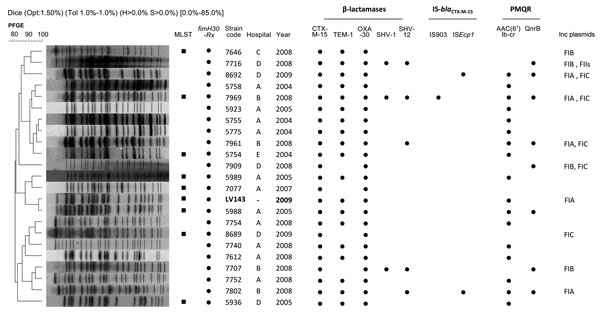Volume 21, Number 12—December 2015
Letter
CTX-M-15–Producing Escherichia coli in Dolphin, Portugal
Figure

Figure. Dendogram of pulsed-field gel electrophoresis (PFGE) profiles showing the relationship between a clonal strain of Escherichia coli of animal origin (LV143, in boldface), and 22 E. coli isolates from humans. We used the unweighted pair group method and the Dice coefficient with 1.8% optimization (opt) and band position tolerance (tol) of 1%. Isolates with a Dice band–based similarity coefficient of >80% were considered to belong to the same cluster. Black squares under multilocus sequence typing (MLST) indicate sequence type (ST) 131 positivity. Year indicates year of isolation. Black circles indicate fimbral adhesion gene fimH, β-lactamase, IS-blaCTX-M-15, and plasmid-mediated quinolone resistance (PMQR) positivity of indicated combinations. E. coli clinical isolates genetically unrelated to the dolphin isolate are not shown. Scale bars indicates percentage relatedness.
1These authors contributed equally to this article.